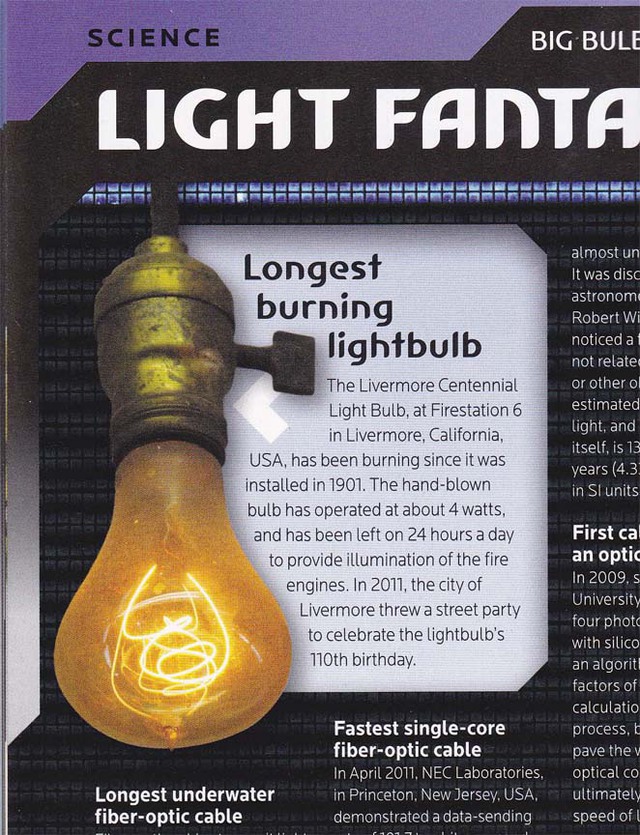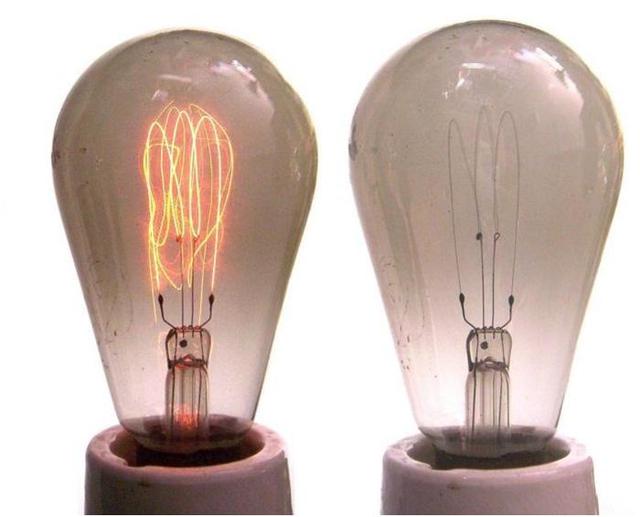Typically, incandescent bulbs have a lifespan of 1,000 to 2,000 hours. Even LED bulbs, which are much more durable than incandescent bulbs, only last between 25,000 to 50,000 hours.
However, hanging from the ceiling of the Livermore Fire Station in California is the longest-lasting light bulb in the world, which has been in operation for over 120 years. What’s even more remarkable is that this incredible lifespan belongs to an incandescent bulb, rather than a special type of technology.

Despite its long existence, its significant lifespan was only brought to attention in 1972 when a firefighter mentioned to a local newspaper about the bulb that had been continuously lit for many years without anyone knowing its origins. Mike Dunstan, a young reporter from the Tri-Valley Herald, began investigating and was astonished by his findings.
It turns out this bulb has been shining almost continuously for the past century, only turning off a few times for short periods – when it was moved in 1903, turned off for about a week in 1937, and again in 1976 when it was relocated. In recent years, it has also turned off a few times due to brief power supply issues dedicated to it.
Since then, this special bulb has started attracting public attention. The Guinness World Records also recognized this 30w bulb as the “longest burning light bulb in the world“. This bulb has also been mentioned in numerous major newspapers and television programs.

In 1976, when it was moved to its new home at Station 6 of the Livermore Fire Department, a crowd of police and firefighters eagerly awaited to see the bulb light up again. Deputy Fire Chief Tom Brandall recalled: “The city’s utility worker installed the bulb and connected the power. For about 22-23 minutes, the bulb did not light up. The crowd held their breath in worry. Then the utility worker took the switch and shook it: it lit up again.”
Since then, this bulb has been under constant camera surveillance to ensure it remains lit at all times. Even in the following years, a live program called “BulbCam” was broadcast to let people watch its activity. On Facebook, there are over 9,000 groups related to this bulb.

Despite its long lifespan, this bulb has never been highly regarded for its brightness – initially, its brightness was equivalent to that of a 60W bulb, but now it only matches the brightness of a 4W bulb. However, this shortcoming is compensated by its design.
Master designer Adolphe A. Chaillet designed this bulb, which was produced by his company, Shelby Electric Company. The unique feature of this bulb is that it uses carbon filaments – which help the bulb last longer and emit less heat than Edison’s tungsten bulbs. But this still doesn’t explain its astonishing longevity.
Many research groups, from the Mythbusters program to NPR, have attempted to explain the remarkable lifespan of this incandescent bulb. However, to this day, all these efforts have only yielded one answer – the mystery.

In 2007, physicist Debora M. Katz managed to acquire a round bulb from Shelby, the same type as the Century bulb, and discovered that the filament of this bulb was eight times thicker than that of modern incandescent bulbs.
“I compared the width of the filament wire of modern bulbs. It turns out the filament of modern bulbs is a coil, with a diameter of about 0.08mm, made from wire that is 0.01mm thick. I didn’t realize this until I looked through a microscope. The width of the filament in the 100-year-old Shelby bulb is equivalent to the width of the coil in modern bulbs, 0.08mm.”
According to Katz, the thicker filament could be the reason for the bulb’s long lifespan. Additionally, Katz also believes that its incredible longevity is partly due to the fact that it operates continuously rather than being turned on and off daily – a process that causes it to wear out faster (as the filament has to be reheated from scratch).
But ultimately, Katz and her students still could not conclude exactly what contributes to this longevity. Justin Felgar, one of Katz’s students, believes that to truly understand it, they need to “tear it apart” and run it through the particle accelerator at the U.S. Naval Academy – a costly process that, for now, cannot be executed as long as this incandescent bulb remains lit.
Summary